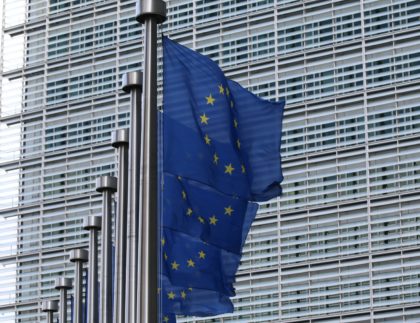
CONTEXTE
Suite à la crise de 2007-2008, le G20 réuni à Pittsburgh en 2009 a décidé de réformer les régulations bancaires et financières. Le règlement européen n°648/2012 sur les produits dérivés de gré à gré, les contreparties centrales et les référentiels centraux (EMIR), publié au Journal Officiel de l’Union Européenne le 27 juillet 2012 et entré en vigueur le 16 août 2012, est la déclinaison européenne des engagements du G20 au sommet de Pittsburgh (Septembre 2009) concernant les marchés de produits dérivés. Il vise à rendre ces derniers plus sûrs et plus transparents. Il a été complété par des standards techniques, publiés au Journal officiel de l’Union européenne le 23 février 2013 et entrés en vigueur le 15 mars 2013
EMIR repose sur les principes suivants :
• une obligation de compensation centrale de l’ensemble des dérivés négociés de gré à gré, jugés par l’ESMA suffisamment liquides et standardisés. De ce fait, le risque de contrepartie sera intégralement transféré aux chambres de compensation ;
• un cadre juridique harmonisé au niveau européen destiné à assurer que les chambres de compensation respectent des exigences fortes en termes de capital, d’organisation, et de règles de conduite ;
• le recours à un ensemble de techniques d’atténuation des risques opérationnels et de contrepartie pour les contrats non compensés ;
• une obligation de déclaration à des référentiels centraux de l’ensemble des transactions sur produits dérivés. (http://www.amf-france.org/Acteurs-et-produits/Produits-derives/Presentation.html)
PERIMÈTRE
EMIR s’applique à toute contrepartie, financière (établissements de crédit, entreprises d’investissement, compagnies d’assurance, sociétés de gestion...) ou non financière qui effectue une transaction sur un produit dérivé. Des exemptions existent pour certaines catégories d’acteurs ou de transactions, lorsque celles-ci ont lieu entre deux entités appartenant à un même groupe, dès lors que certaines conditions sont vérifiées. Le périmètre des produits couverts par EMIR est le suivant :
• concernant l’obligation de compensation et les techniques d’atténuation des risques : tout dérivé de gré à gré (i.e. tout instrument financier dérivé au sens de la directive MIFID, dès lors que son exécution n’a pas lieu sur un marché réglementé).
• concernant les dispositions applicables aux contreparties centrales : tout instrument financier. • concernant la déclaration aux référentiels centraux : tout contrat dérivé, aussi bien de gré à gré
que négocié sur un marché réglementé.
RÉGLEMENTATIONS
La réglementation EMIR est issue du règlement Européen n°648/2012, accessible via ce lien :
http://eur-lex.europa.eu/LexUriServ/LexUriServ.do?uri=OJ:L:2012:201:0001:0059:FR:PDF
Les USA ont adopté de leur côté le Dodd-Franck Act
LE CHANGEMENT
Des problématiques liées au collatéral apparaissent dans les 4 principes d’EMIR mais les nouveautés à mettre en place se situe principalement sur les 3 derniers points pour les acteurs agissants sur les marché des instruments OTC :
Un cadre juridique harmonisé au niveau européen destiné à assurer que les chambres de compensation respectent des exigences fortes en termes de capital, d’organisation, et de règles de conduite 3 types de comptes peuvent être ouverts par les clearers pour leurs clients. Ils offrent des niveaux de coûts d’usage, de collatéraux et de protection différents.
-Comptes Omnibus Net (OSA Net)
-Omnibus Gross (OSA Gross)
-Individually Segregated Account( ISA)
Pour en savoir plus :
http://www.afg.asso.fr/index.php/fr/textes/doc_download/5187-
Le recours à un ensemble de techniques d’atténuation des risques opérationnels et de contrepartie pour les contrats non compensés : Variation Margin Regulation dois être mis en place pour le 1/03/2017
- Mettre à jour la documentation juridique pour la rendre conforme à EMIR
- Décider du traitement des trades existants
- Etre capable de réconcilier et valoriser quotidiennement les portefeuilles d’OTC - - Pouvoir gérer des appels de marge quotidien
Initial Margin Regulation rentre en vigueur progressivement à partir du 1/09/2016
- Comment s’accorder sur le calcul de l’IM
Dans la section 4 les travaux de groupes travaillant sur ce sujet
https://eiopa.europa.eu/Publications/Technical%20Standards/ESAs_2016_23_Final_Draft_RTS_on_Risk_Mitigation_Techniques.pdf
Les travaux dirigés par l’ISDA
https://www2.isda.org/functional-areas/wgmr-implementation/
Ségrégation des comptes
- Où ouvrir ces comptes ?
- Comment organiser les flux ?
Gestion du collatéral
- Comment développer de nouvelles méthodes de gestion du collatéral ?
- Comment utiliser au mieux le collatéral dont on dispose ?
- Comment éviter des concentrations dans le collatéral détenu
Une obligation de déclaration à des référentiels centraux de l’ensemble des transactions sur produits dérivés
- A partir du 1er novembre 2017 le fichier contrepartie envoyé au Trade Repository doit décrire la nature, le montant de tout collatéral reçu ou envoyé pour chaque contrepartie.
http://eur-lex.europa.eu/legal-content/FR/TXT/PDF/?uri=CELEX:32017R0104&from=EN






